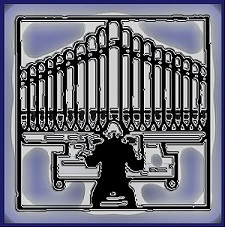
.
Johann Sebastian Bach
Sinfonia
from
Cantata No. 29
"Wir danken dir, Gott , wir danken dir"
Transcription for Organ
Ennis Fruhauf
(10 pages of music)
Notes
In this transcription, intended for a two or three manual instrument,
adaptations have occasionally been made to manual and pedal figurations
to facilitate performance, and while pedal and left hand move at a relaxed pace,
the rigors of the right hand solo are readily apparent. Although ideally
suited to a Baroque registration and interpretation, a French romantic
rendition — registered for
grand orgue
and performed in an equally grand manner — will also provide a stunning
addition to concert repertoire.
As a personal message from the
publisher about the posting of this selection in the midst of a viral
pandemic that has altered global life styles and values almost overnight, a
translation of 'Wir danken dir, Gott' would be 'We thank thee,
God'. Given the devastating events and worldwide losses of lives and hopes
in which we now live,
one might wonder at the title while forgetting all the wondrous blessings
that we still enjoy on a daily basis—even in difficult times—and give thanks for healers, emergency workers and countless brave souls,
and also for all the daily blessings to be found in 21st Century life styles. Perhaps it
might help to
understand that Bach and his family also suffered through regional epidemics
in what is now Germany, and yet the composer was able to rise above the
acute sorrows caused by personal family losses and continue to create music
with the power to lift one's spirits and nourish the souls of all who pause to listen.
a letter-sized PDF booklet
(Covers, notes, and 10 pages of music)

Performances available online from YouTube
For YouTube sites that includes a stunning performance of Bach's E major
solo violin partita, another of Cantata S. 29, followed by three arrangements
of the sinfonia for organ solo, and one one more for a lute duo, here are
several
Internet links to peruse:
◊ for the E major solo violin partita:
https://www.youtube.com/watch?v=gYT1JUq0k04
◊ for the cantata in a
full performance:
https://www.youtube.com/watch?v=Ih51HIyTW0Q
◊ for two versions for organ solo performed on famous French
pipe organs,
the second one working from a transcription by Marcel Dupre:
https://www.youtube.com/watch?v=8EKkAbFxqc4
https://www.youtube.com/watch?v=V3olBPGLNvc
◊ and one more for organ solo from New York City:
https://www.youtube.com/watch?v=ntJ5sf33T8A
◊ and a revelatory performance by a lute
duo:
https://www.youtube.com/watch?v=uceI6WMdK2I